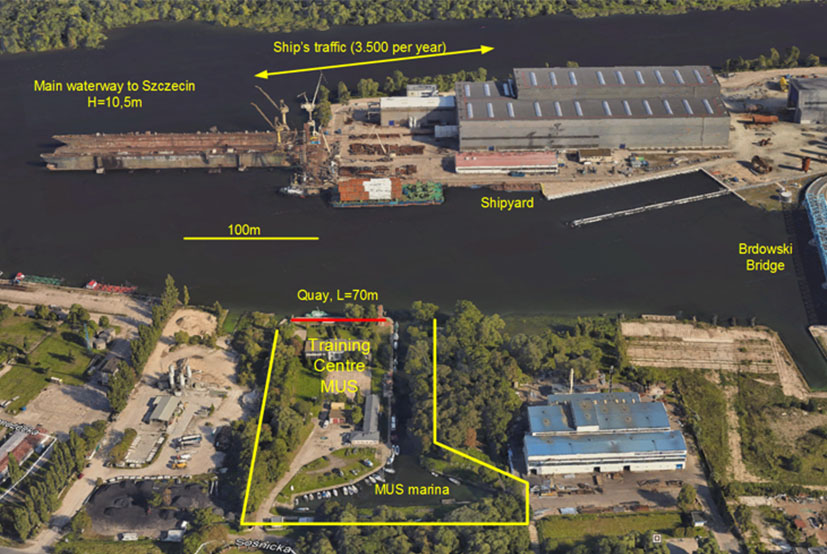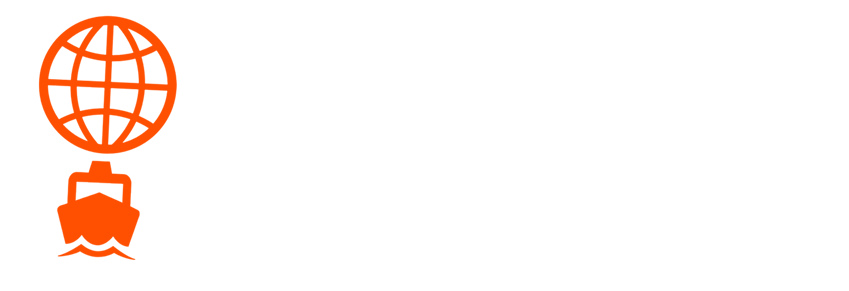
Campaign 1 (C1): Pollution monitoring (safety). Kolobrzeg, Poland
A first validation campaign will be done in MUS Rescue Training Centre located in north part of Kolobrzeg Port at Ludowa street. The facility has access to the Odra River and own quay of 70 m length. The marina is located inside the training centre.
The location of MUS training Centre in close vicinity (400m) to the Kolobrzeg –Świnoujście waterway gives very good opportunity to validate Passport solution in interaction with real ship traffic. The intensity of ocean going ships on this waterway is 3.500 ships per year and the largest ships are up to 200m of length. Pleasure crats and inland crafts traffic is large, giving the opportunity to monitor and interact with non-convention ships, which are not equipped with AIS. The large Gryfia shipyard located nearby (200m) gives opportunity to test PASSport solution in the ship inspection and damage (post-accident investigation) detection process.
The own MUS marina located in the Centre gives the good opportunity to investigate the PASSport solution as identification mean of yachts and small boats in ports. In this area, safety is assured by Maritime Office in Kolobrzeg (MOS) which represents a potential user of the developed technology.
The campaign in Kolobrzeg will be focused on the pollution monitoring use case, considering:
- Air pollution
- Oil spills
- Dry bulk cargo spills (chemical spills)
- Cargo on shore
To date stationary networks (environmental conditions and water quality measurements) of sensors have some problem as they suffer of wind conditions, are subject to acts of vandalism and require a considerable cost (in order to monitor all port areas, several dozens of sensors are necessary each powered and connected to Internet).
Several monitoring activities (e.g. necessary to control the exhaust gases from ships can be performed only during ships manoeuvres so the use of drones could be considered as the only possible solution.
Based on that, the demonstration in Kolobrzeg will be arranged using a rotary wings drone equipped with sensors for pollution identification (e.g. processing unit, infrared/ optical camera, Fluorometer hydrocarbon sensor) performing the following tasks:
- Automatic monitoring – the drones will be capable to perform autonomously the monitoring tasks. Drones will fly above the water passing in safe distance ships and other objects, not generating threats for the people on shore.
- Multi-sensor scanning head for environmental pollution in ports (combination of optics, and other sensor head) will be used. Such head will be developed from OEM parts off the shelf. The combined laser fluorescence, optical and thermal camera head will be developed.
- Tracking the oil spilled by means of a dedicated Software
- Operator induced monitoring. Performed some tasks which are triggered by operator. Cursing the drone around the object, stationary hanging etc.
- Taking the samples from water. Landing and staring from water. Sampling technique.
- Supporting fire-fighting and oil combat operations. Delivering the information about oil slick. Online monitoring of oil slicks or fires
- Delivering the evidences for court cases in for air and water pollution.
- The approach of drone near moving ship using its AIS information and visual observation by operator to the samples of exhaust gases.
- Monitoring the ship approach to the quay for evidence if energy of berthing was not too high and if the fenders and quay was not destroyed.
